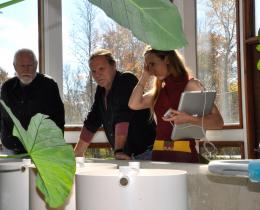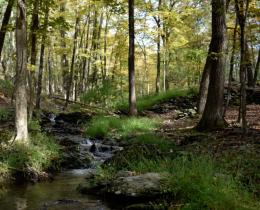As growing drought problems across the country indicate, our relationship with water is necessarily shifting toward more serious consideration of conservation and prevention of pollution.
The current drought in California could be the perfect case study of how to change our relationship to water. In a dry year, about 80 percent of water used in the state goes to agriculture, the core economic activity of many nonurban communities in the areas hardest hit by the drought. California is critical to the United States' food supply as it produces a majority of the country's fruit, vegetables, and nuts.
Governor Jerry Brown has set a goal to reduce water use by 20% this year, and the ways state and local municipalities try to do that will be closely watched by other parts of the country. However, because agriculture in California uses so much water, all the smaller conservation efforts, like taking shorter showers and restricting car washing and lawn watering, while important in the aggregate, will only take the state so far.
Recycling Used Water & the Yuck Factor
One possible solution is to use more recycled water. While the notion and practice of reusing water is increasing, more can be done, including purifying wastewater for potable needs. In Singapore, thanks to several new wastewater recycling plants, 5% of the tap water comes from purified wastewater. The city's goal is to meet half its water demands this way.
In many places it will be challenging to get past the public perception—or yuck factor—of recycling wastewater, but it is possible (as in the case of Singapore), to purify the water such that it exceeds the standards set by the Food and Agriculture Organization of the United Nations.
Even if not treated for human consumption, using recycled water for irrigation and landscaping can be a key part of better stewardship of water.
To help make water recycling effective, we can put an end to thinking of water as a place to dispose of waste, both industrial and personal. Flushing our bodily byproducts with or into potable water is not a long-term solution for waste disposal, especially in drought-stricken areas.
Technology is currently available to deal with our waste in eco-friendly ways. Composting toilets and toilets that separate out urine and feces for collection are both available and proven technologies. Natural treatment methods, such as the Eco Machine™ at Omega, demonstrate how to treat wastewater in ways that replace harsh chemicals with natural processes.
We can also reconsider some of our more intimate personal habits. For example, counterintuitively, washing ultimately uses less water than wiping, because of the invisible water costs needed to make toilet paper.
On a community level, combining stormwater and sewage into one system is a recipe for mismanagement of water. According to the EPA approximately 770 cities in the U.S. have combined sewer systems. During periods of heavy rainfall or snowmelt, these systems are designed to overflow, and in the process they dump excess polluted water into nearby streams, rivers, or other bodies of water. Such systems are rooted in a view of water as something that can continue to accommodate our human waste, rather than being grounded in a relationship that views water as both scarce and sacred.
Reducing Your Water Footprint
There is water in everything, and it takes water to make everything. Everything has a water footprint, though the footprint might be invisible. Making personal lifestyle choices that reduce your water footprint is the beginning of systemic change.
Diet is a good place to start. While there are many nuances to which foods use more water than others, eating a predominantly plant-based diet and reducing or eliminating meat and dairy products slashes the amount of water needed to keep us all well-fed and properly nourished.
Consumer goods also have a water footprint. It takes approximately 2,900 gallons of water to make a single pair of cotton denim jeans while making a car takes slightly less than 106,000 gallons of water on average. Since our goods don’t have water footprint labels on them, the best way to reduce your water footprint is to be thrifty. Buy only things you truly need, and then buy the highest quality and longest lasting product you can afford.
In agriculture, there are dozens of ways to reduce the amount of water needed to keep everyone fed, including drip and micro-irrigation (traditional irrigation methods employed in desert climates), drought tolerant seeds and crops, organic methods to take care of soils, agroforestry, and more.
A number of successful examples of ways to save water exist already, and more will certainly be tested as California and others deal with the current drought. Each individual and community can look at all the possible options and determine together what the most appropriate approach is for a given area or situation, depending on the local soil, geography, and climate. One size does not fit all as we shift into a new way of stewarding our water resources.



